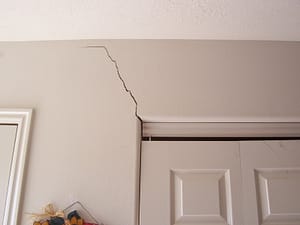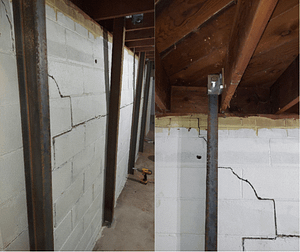The Ultimate Guide To Best Basement Waterproofing
The Ultimate Guide To Best Basement Waterproofing
Blog Article
Best Basement Waterproofing Things To Know Before You Get This
Table of ContentsHow Best Basement Waterproofing can Save You Time, Stress, and Money.Best Basement Waterproofing - The FactsIndicators on Best Basement Waterproofing You Should KnowGetting My Best Basement Waterproofing To WorkAbout Best Basement Waterproofing
AdvantaClean's trained specialists and professionals will certainly find the water source. If wall surface or slab splits are present, we will certainly inject polyurethane and epoxies right into the fractures and seal the compromise, protecting against more moisture from getting in.Mounting cellar air flow systems, conditioning systems, or cellar dehumidifier systems to get water out of your cellar. Choosing AdvantaClean's cellar waterproofing solutions is an effective method to treat dampness and protect against mold and mildew from compromising the structure of your home and the health and wellness of your family.
If there's condensation on the outside of the aluminum foil, you have high humidity in your basement. Repair it with a mobile space dehumidifier or a whole-house humidifier system as opposed to waterproofing items. If the foil has condensation on the inside surface area (beside the wall), the soil around your home might be normally damp from a high water table or bad soil drain.
You can waterproof simply your indoor wall surfaces, which might address the problem. Once they dry, they stick completely to concrete and masonry wall surfaces.
The Main Principles Of Best Basement Waterproofing
Concrete water resistant coatings can not be applied to previously repainted surface areas; examine the tag. Understood as densifiers, they are suitable just for wall surfaces that haven't been repainted or secured.
Yet you comb, roll, or spray it on far more heavily one gallon covers simply 75 square feet, not the 300 square feet typical with standard paint. Water resistant paint is fine for DIY application. You can use it over repainted surface areas, and paint over it once it's cured (one gallon prices $37).
It can set you back $10,000 to $15,000, depending on the job needed. Outside waterproofing includes excavating around your house to the full depth of the foundation wall surfaces, then installing a waterproof covering or membrane covered by water drainage panels. The panels provide an easy course for water to flow to an exterior French drain at the end of your structure.
Things about Best Basement Waterproofing
We've all been caught in a storm with no my site umbrella or raincoat. And it's always a recipe for catastrophe: everything's damp, your coiffure is messed up, and things are obtaining musty. A basement without waterproofing is sort of like that. Minus the wrecked coiffure component. Your basement doesn't wish to go through a rainstorm without correct security simply as much as you don't want to.

Outside waterproofing is a waterproofing technique that includes sealing your home from the outside. It's kind of like a moat around a castle. It involves excavating a trench around your entire residence to the foundation (regarding 8 to 10 feet down). The foundation wall surfaces are after that cleansed, sealed, and covered with a water resistant membrane or sealant.

Best Basement Waterproofing for Dummies
It's a more engaged process that needs digging up your lawn, which is costly and time-consuming. Exterior waterproofing entails eliminating everything surrounding the house, consisting of verandas, driveways, sidewalks, landscape design, a/c units, decks, and more. If any one of the work was done inaccurately and water is still entering your cellar, there isn't much you can do to correct or repair it.
Inside basement waterproofing entails waterproofing from the inside. Any water that my explanation leaks into your basement is redirected prior to it touches your floor.
It's a reliable method to water-proof your cellar. The disadvantage of interior cellar waterproofing mainly has to do with the installation procedure.
Excitement About Best Basement Waterproofing
In final thought, outside and indoor basement waterproofing are both effective techniques of protecting your home from water damage. Exterior waterproofing creates a barrier that avoids water from entering your home, while interior waterproofing redirects water that does enter your home. And it's important to keep in mind that outside waterproofing is a pricey and turbulent setup procedure when contrasted to interior waterproofing.
Whichever method you pick, make certain you select a reliable and trustworthy contractor for the work. Both methods need knowledgeable employees to take care of the job. If you have any kind of inquiries about cellar waterproofing, please reach out to us. And if you remain in our service area and have water in your cellar, contact us for a totally free, no-obligation home examination.
You can complete our kind right here. Best Basement Waterproofing, begin a chat in the lower right-hand corner, or call us at 1-800-827-0702
Report this page